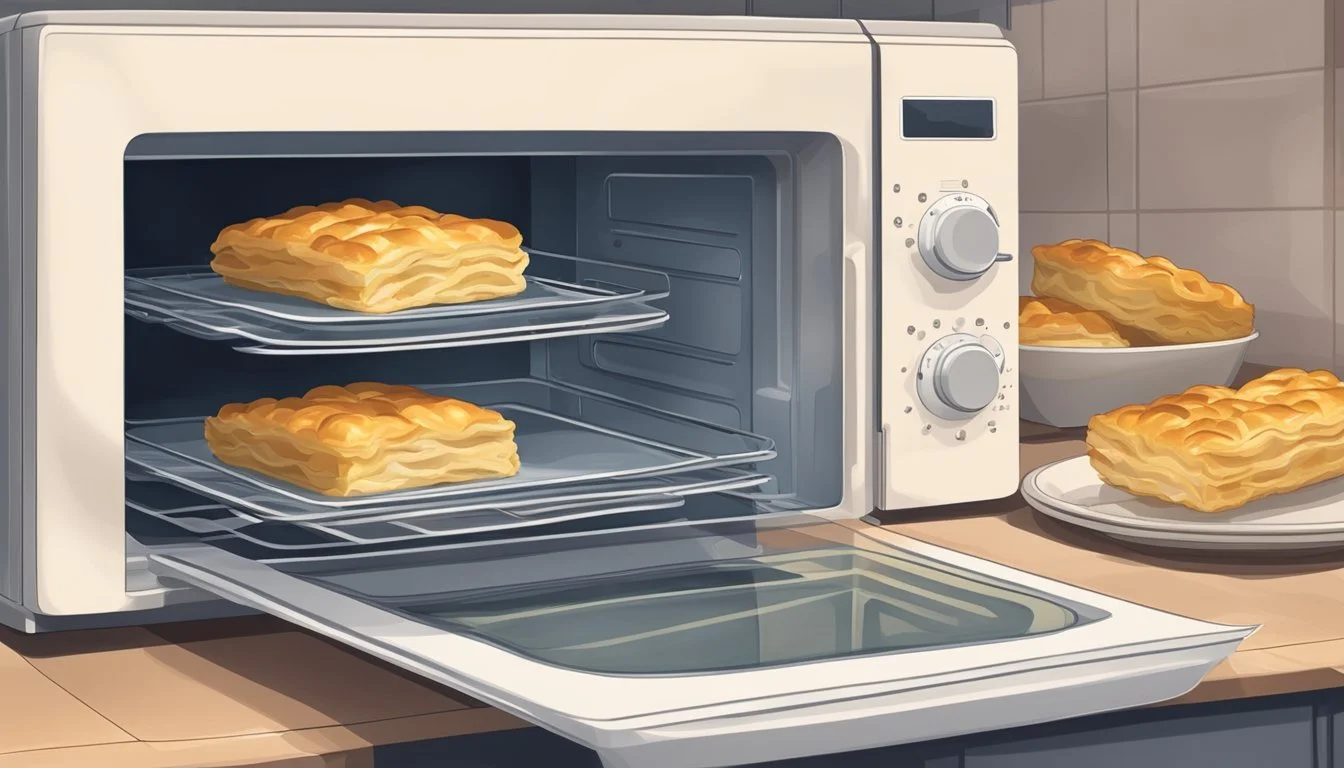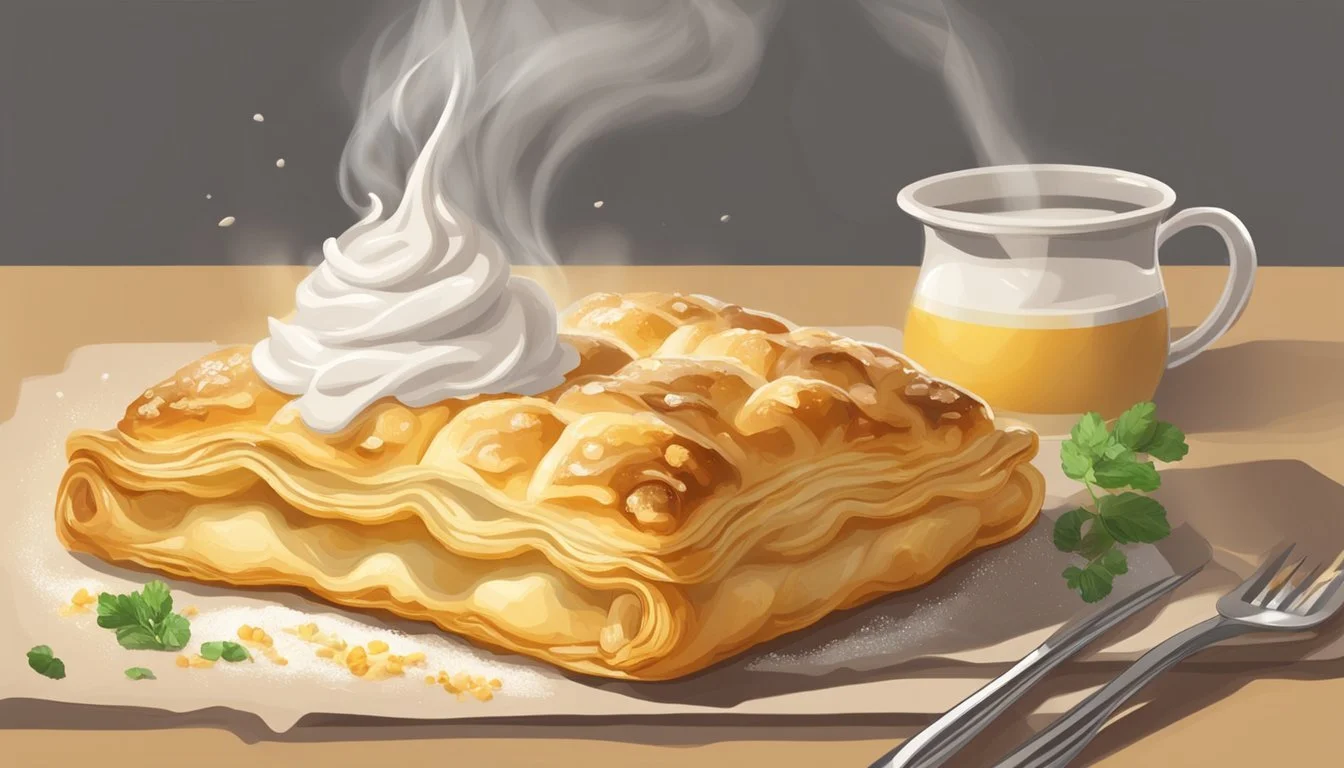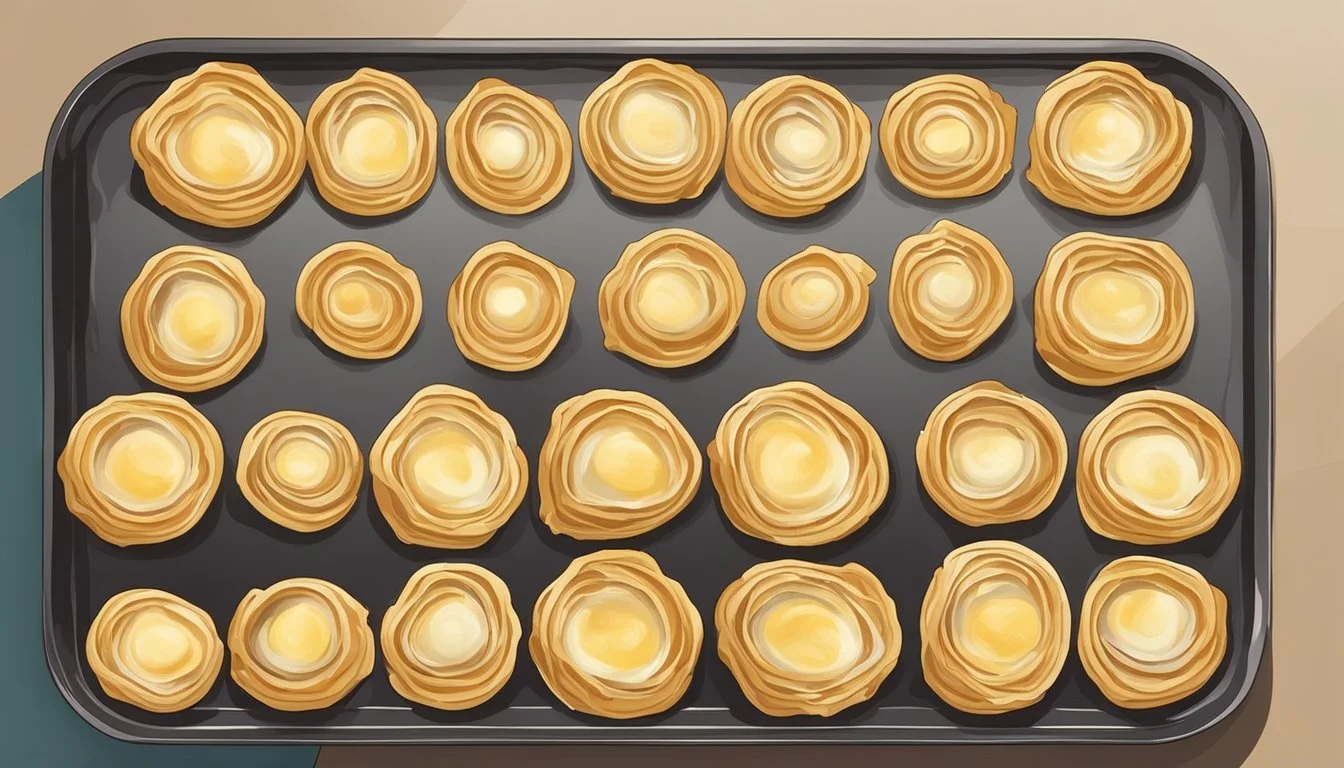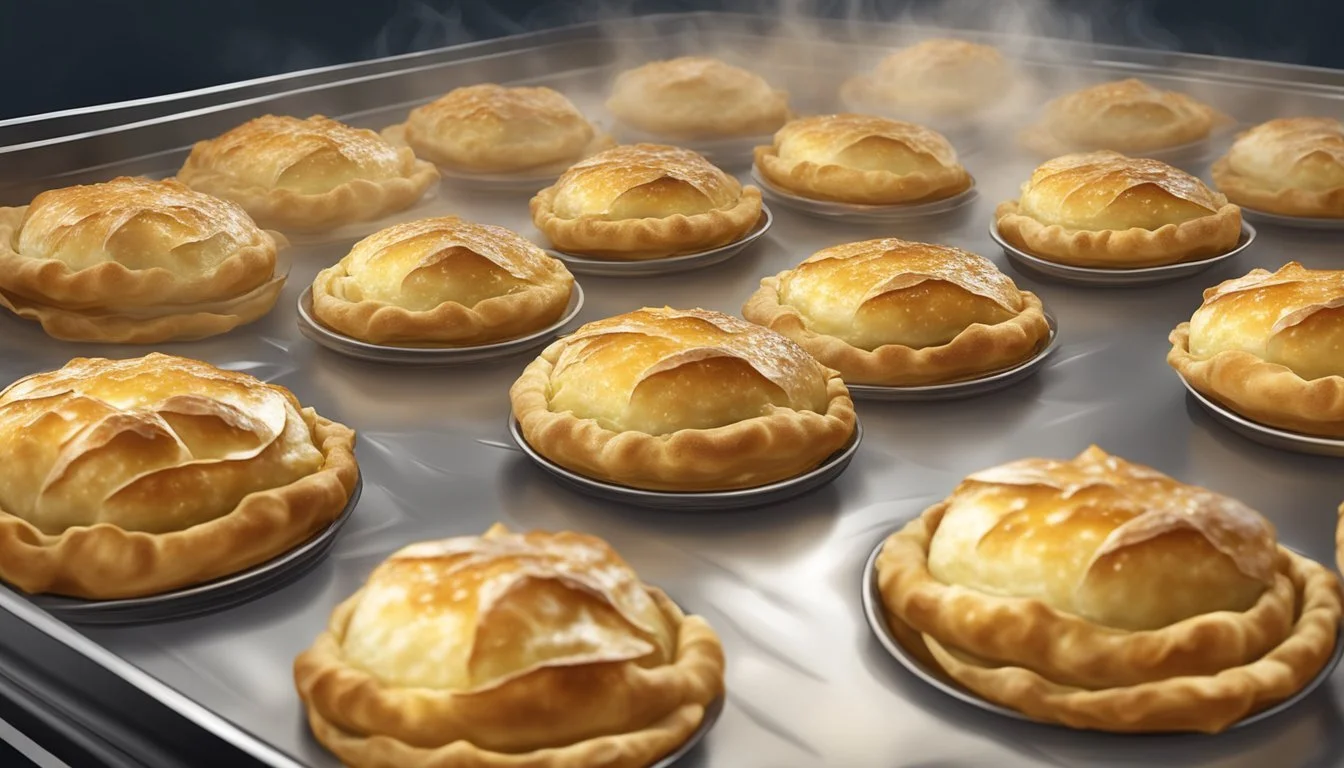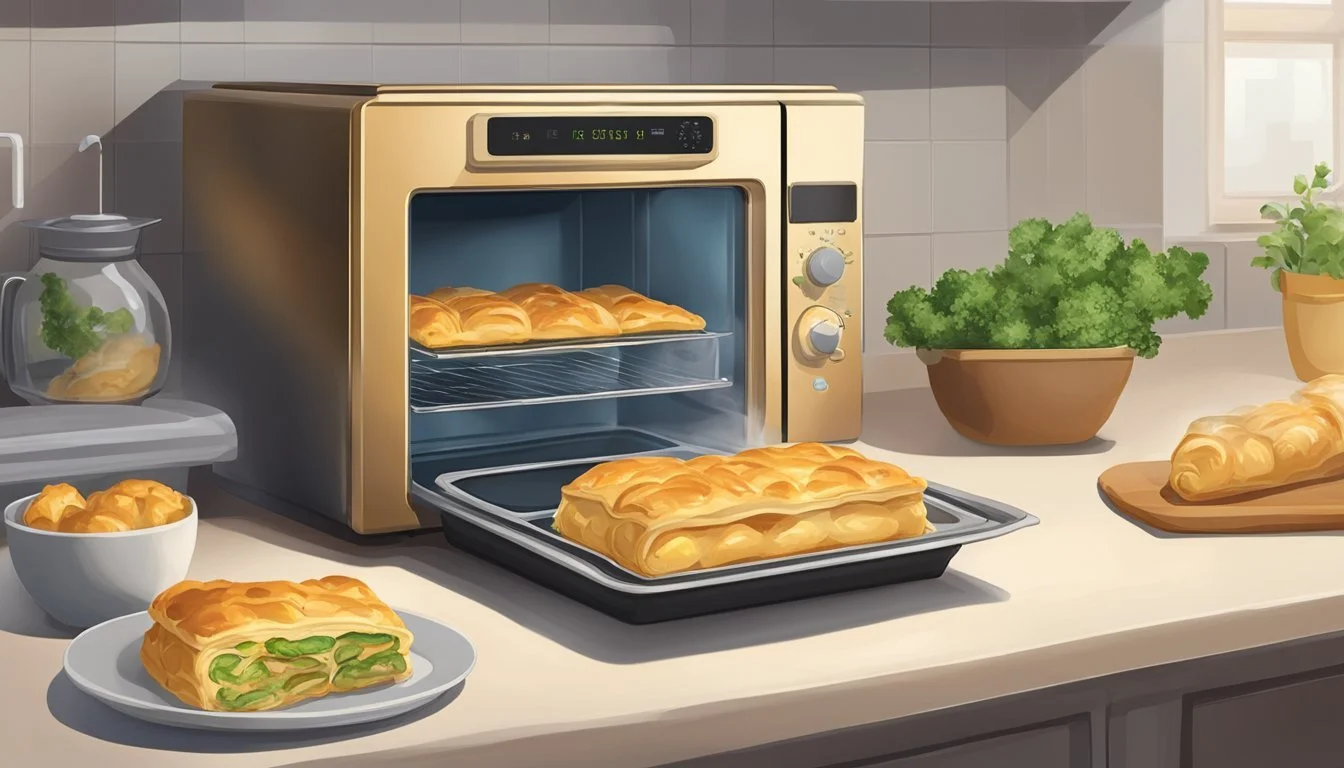Best Way to Reheat Borek
Ensuring a Crisp Pastry and Warm Filling
Borek, a traditional pastry hailing from Turkish cuisine, is best enjoyed when its exterior is crisp and flaky, and its filling is delightfully warm. Heating borek to achieve that just-baked quality can be challenging, particularly because the pastry can easily become soggy or the filling might not warm through evenly. However, with the proper technique, one can reheat borek to preserve its texture and taste that makes it so appealing.
The key to a successful reheating process lies in understanding the balance between temperature and time. It's crucial to apply heat that is high enough to crisp the pastry without burning it, while also ensuring that it penetrates to the core, warming the filling thoroughly. It's also important to use a method that doesn't introduce additional moisture, which could compromise the flakiness of the borek.
Methods vary from oven baking to microwaving with specific steps to retain the pastry's desirable characteristics. The most effective method typically involves bringing the borek to room temperature before gently warming it in a preheated oven. This not only facilitates even heating but also helps in maintaining the texture of the pastry. In choosing the right method, one must consider the type of borek, the filling, and the desired outcome, which is a perfectly reheated, flaky pastry with a warm filling.
Understanding Borek
Borek, a traditional pastry that graces many cultural tables, particularly in Turkish cuisine, relies heavily on the right choice of pastry and the careful selection of ingredients. To fully appreciate the art of reheating Borek, an understanding of its components and texture is vital.
Pastry Types:
Puff Pastry: Known for its buttery layers and sumptuous flake.
Filo Pastry: Defines Borek with its thin, delicate sheets that become irresistibly crisp.
Each pastry requires a different approach when baking and reheating to maintain their unique textures.
Dough Preparation: Borek's dough is the cornerstone of its structure. Its preparation varies depending on the desired outcome. For a lighter texture, a thinner dough like filo is preferred, whereas puff pastry provides a more substantial bite.
Texture Goals:
Exterior: Seeks a golden brown and flaky finish.
Interior: Desires a warm and cohesive filling, protected by the enveloping pastry.
Ingredient Interplay: The melding of simple, often staple, ingredients creates Borek’s harmony. Basic components such as water, flour, and oftentimes yeast, are elevated when brushed with mixtures of egg, milk, or oil, which contribute to the pastry's layered texture upon reheating.
To guarantee the Borek retains its signature crispiness while ensuring the filling stays moist and warm, one must approach reheating with precision—a challenge that devotees of this dish are well-versed in overcoming.
Pre-Reheating Preparations
Properly preparing Borek before reheating is crucial for maintaining its flakiness and ensuring the filling warms evenly. These preparations help transition the Borek from storage to reheating while preventing moisture loss and sogginess.
Thawing Frozen Borek
Frozen Borek must be thawed gently to preserve its texture. The Borek should be removed from the freezer and placed in the refrigerator for several hours or overnight. This slow thawing process allows the Borek to defrost without the pastry being subjected to temperature shock, which can lead to a loss of flakiness.
Location: Refrigerator
Duration: Several hours to overnight
Container: Keep in an airtight container to retain moisture
Bringing Borek to Room Temperature
Once thawed, allowing Borek to come to room temperature before reheating is a key step. Remove the Borek from the refrigerator and let it sit in its airtight container on the counter for approximately 20 to 30 minutes. This step helps ensure even heating throughout the Borek and reduces the risk of a cold center.
Duration: 20-30 minutes
Condition: Keep covered to avoid drying out
By attentively managing the temperature transition of frozen puff pastry Borek—from the freezer to the fridge, and then to room temperature—its quality is preserved for a perfect reheating result.
Reheating Borek in the Oven
Reheating Borek efficiently in the oven requires an understanding of temperature settings and proper baking tray preparations to ensure the pastry remains flaky and the filling is adequately warmed through.
Preheating the Oven
The oven should be preheated to a temperature that warms the borek without burning it or drying it out. A moderate temperature of 350°F (175°C) is generally recommended to ensure even heat distribution. Patience is key; they should wait for the oven to reach the desired temperature before placing the borek inside.
Preparing the Baking Tray
Prior to baking, they should line a baking tray with parchment paper to prevent sticking and ensure easy removal of the borek after reheating. If parchment paper is not available, a light coating of non-stick spray or a brush of butter on the baking tray can serve as alternatives.
Oven Reheating Process
Reheating the borek properly involves several steps to maintain its texture and warmth. They should place the borek on the prepared tray and if it's covered in phyllo or puff pastry, it's crucial to avoid covering it so that the pastry can become golden brown and flaky.
Position the borek in the center of the oven for optimal heat circulation.
Heat the borek for about 10-15 minutes, checking occasionally to prevent over-browning.
They should look for a golden brown appearance as a sign the borek is heated through and the pastry has crisped up. After removing it from the oven, allow the dish to cool down for a couple of minutes on the baking tray to help firm up the pastry before serving.
Reheating Borek on the Stovetop
Reheating borek to maintain its flaky pastry and warm filling can be efficiently achieved using a stovetop method, especially for achieving a crispy crust and avoiding sogginess.
Using a Cast Iron Skillet
One should start by placing a cast iron skillet on the stovetop over medium heat. The skillet's even heat distribution is key to reheating the borek uniformly without burning it. Before adding the borek to the skillet, it's advised to add a small amount of oil, which will help in restoring the flakiness of the pastry.
Step 1: Preheat the skillet on medium heat.
Step 2: Add a thin layer of oil (preferably a neutral one such as vegetable or canola) to the skillet.
Step 3: Place the borek in the skillet when the oil is heated but not smoking.
Reheating for Crispy Crust
For a crispy crust, one should monitor the borek closely and occasionally press down with a spatula to ensure even contact with the hot skillet, which helps to crisp up the pastry without burning. The borek should be turned over carefully to heat the other side, maintaining a crispy exterior while ensuring the filling is thoroughly warmed.
Step 1: Allow the borek to reheat slowly, pressing gently with a spatula.
Step 2: Turn the borek after a few minutes, reheating each side until it's crispy and golden, typically around 3-5 minutes per side.
By using this approach, one can achieve borek that is appealingly crispy with a crust that offers a satisfying texture, while also ensuring the filling is heated through to the perfect temperature.
Microwave Reheating Tips
Heating borek in a microwave can be tricky as it risks losing the pastry's flakiness. However, with precise techniques, one can retain moisture and avoid drying out the delicate layers.
Step-by-Step Guide:
Preparation
Remove the borek from the refrigerator and let it sit at room temperature for a few minutes.
Damp Paper Towel
Wrap the borek loosely in a damp paper towel. This introduces moisture to prevent the pastry from drying out.
Power Level
Use a medium power level or the defrost setting. High heat can cause the pastry to become tough.
Time Intervals
Reheat in short bursts, checking regularly to avoid overheating. 20-30 seconds increments are optimal.
Stand Time
After each interval, let the borek rest. This allows the heat to distribute evenly.
Additional Tips:
Plate Selection: Use a microwave-safe plate to avoid any chemical leaching or damage.
Turnover: If possible, turn the borek halfway through reheating for even warmth.
Rest Post-Microwave: Once heated through, let the borek sit for a minute before serving to allow residual heat to finish the process.
By adhering to these guidelines, one can achieve a warm borek with a flaky texture using a microwave.
Enhancing Flavor and Texture
To elevate the taste and preserve the desirable crispness of borek when reheating, one may employ simple techniques involving butter, oil, and egg wash. These substances, when used correctly, have the power to enrich both the flavor and the textural qualities of the pastry.
Using Butter or Oil
Reheating borek often risks drying out the pastry, but applying a thin layer of melted butter or a light brushing of oil can counteract this. The fats act as a barrier, locking in the borek's internal moisture while contributing to a richer flavor and a more appealing golden exterior. Here's a concise guide:
Butter: Melt and brush a light coating on the borek before placing it in the oven.
Oil: Use a pastry brush to apply a fine layer of oil, which is less saturated than butter and can offer a different flavor profile.
Both options not only enhance the taste but also promote an even, flaky texture upon reheating.
Applying Egg Wash
An egg wash—a blend of beaten eggs, often with a pinch of salt—may be applied lightly over the borek's surface before it's reheated. This technique achieves multiple objectives:
Flavor: The egg wash introduces a subtle richness and depth to the palate.
Texture: As the borek reheats, the egg wash encourages a uniform, golden-brown crust that's visually pleasing and texturally satisfying.
For best results, a pastry brush should be used to evenly distribute the egg wash, avoiding saturation which could lead to sogginess.
Finishing Touches
After reheating, the final steps can elevate the texture and taste of your Borek. These careful additions complement the warm, flaky crust and the rich filling inside.
Sprinkling with Toppings
To add a golden finish to the crust, one might consider a light brush with egg wash before the final few minutes of reheating. For a touch of elegance and sweetness, a dusting of powdered sugar works well with sweet Borek varieties. For savory iterations, a sprinkle of sesame seeds or finely chopped parsley can enhance both flavor and presentation.
Cooling Before Serving
To ensure the pastries retain their structure, allowing them to cool properly is essential. One should let the Borek rest on a cooling rack for several minutes. This step prevents the exterior from becoming soggy due to trapped steam. Cooling allows the layers to set, ensuring that each bite delivers the intended flaky crunch.
Storing Leftover Borek
Storing leftover Borek properly ensures the pastry remains as fresh as possible, whether one plans to enjoy it in a few days or decides to save it for an extended period.
Storing in Refrigerator
For short-term storage, Borek should be kept in the refrigerator. To maintain freshness and prevent the pastry from drying out, leftovers should be wrapped securely with plastic wrap or aluminum foil. Alternatively, one can store them in an airtight container. This method is suitable for keeping Borek for up to 3-5 days. When placing Borek in the refrigerator, it's important to allow it to cool to room temperature first to avoid condensation, which could lead to a soggy pastry.
Freezing and Reheating
For longer storage, Borek can be frozen. Before freezing, the Borek should be placed on a baking sheet and frozen until solid, then wrapped in plastic wrap and placed in a freezer bag to prevent freezer burn. Properly stored, frozen Borek can last for up to 3 months. When ready to eat, there's no need to thaw; one can simply reheat the Borek directly from the freezer. Preheat the oven to 350°F (175°C) and place the frozen Borek on a baking sheet lined with parchment paper. Heat until the filling is warm and the pastry is flaky, which may take about 20-30 minutes.
Borek Variations
Borek, a versatile Turkish pastry, can be adapted to suit a wide array of tastes, with meat-filled variations appealing to carnivores and vegetarian options available for those preferring a meat-free choice.
Meat and Vegetarian Options
Meat Options:
Beef Borek: Often seasoned with onions, garlic, allspice, and black pepper, beef filling is a popular choice for its rich flavor.
Meat Pie Borek: This variation is akin to the classic meat pie, with a mixture of ground meats, onion, and spices encased in flaky pastry.
Vegetarian Options:
Spinach and Cheese Borek (Spanakopita): A classic option that combines leafy greens with feta cheese, offering a salty and tangy taste that complements the buttery crust.
Cheese Borek: Features a range of cheeses, often mixed with herbs and bound together with egg, which creates a creamy and hearty filling.
Different Types of Fillings
Beef Filling: Ground beef is the staple, but extra layers of flavor come from onions, pine nuts, and a hint of black pepper for warmth.
Spanakopita Filling: Spinach, feta, and sometimes hints of garlic or dill exemplify a traditional Greek influence on the Turkish borek.
Vegetarian Fillings: Can range from simple potato and onion mixtures to more elaborate blends including pumpkin, lentils, or mixed vegetables, all seasoned with bold spices or aromatic herbs.
Herb and Spice Variations: The use of spices such as allspice and black pepper, and herbs like parsley or cilantro, can significantly change the profile of a borek, making each bite a unique experience.

